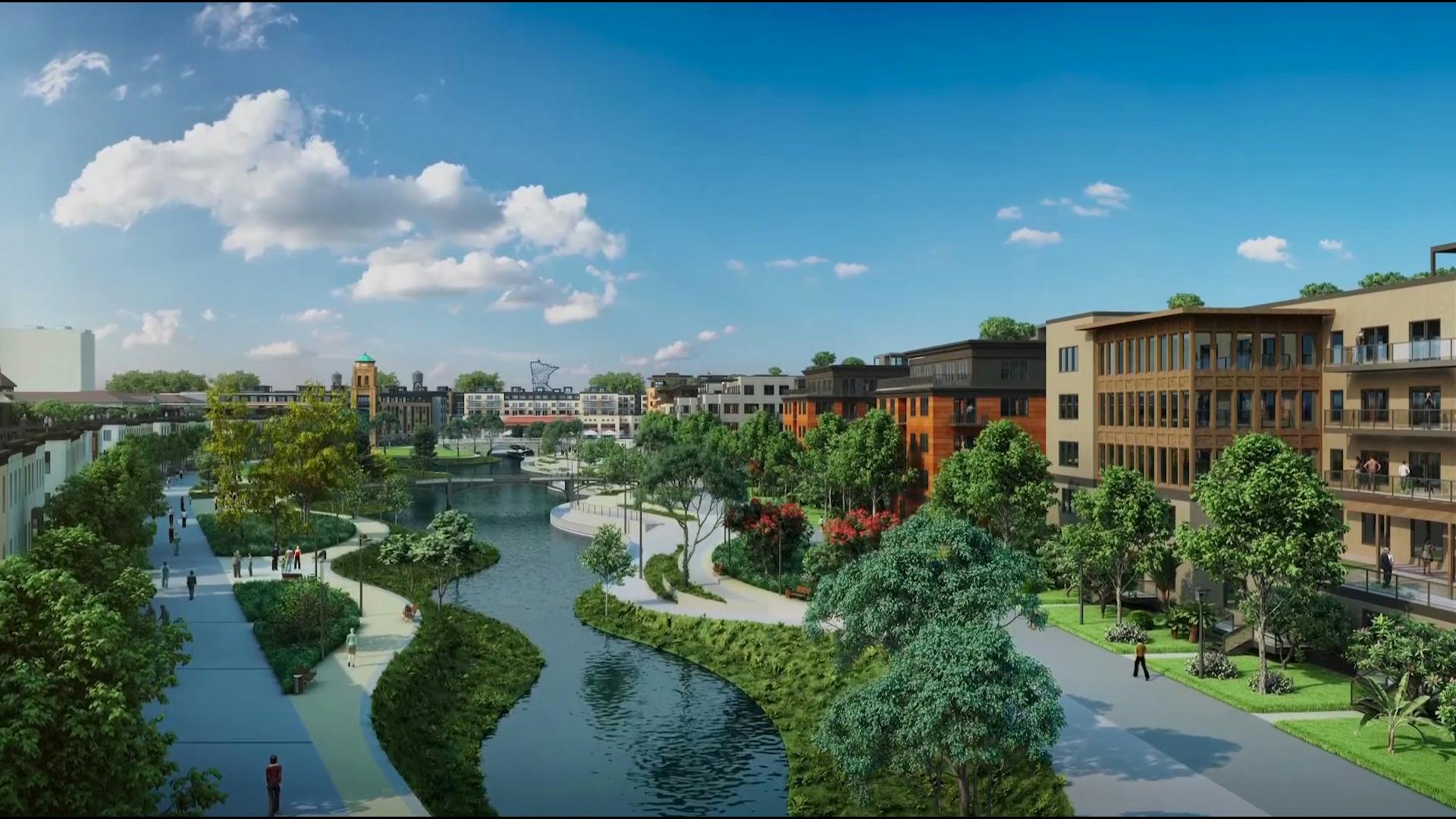Trumpeting what aims to be the largest redevelopment in St. Paul history, Mayor Melvin Carter announced Tuesday that the city has reached a deal with Ryan Cos. to transform the former Ford assembly plant site into a bikeable, walkable village of thousands powered by renewable energy.
"This is a once-in-a-generation opportunity," Carter said. "I'm confident that the City Council, our business community and our residents are going to see this as an enormous vision for our city and be excited to move forward."
Carter said he expects that by the end of the year, the council will vote on the deal, which commits $53 million in property taxes generated by the site to help build out its streets and utilities.
At a news conference inside a heated tent on a frigid day at the now-vacant 122-acre site, city officials were joined by Gov. Tim Walz and a bevy of legislators and labor union officials.
The project is expected to generate 14,500 construction jobs over its two-decade build-out and employ more than 1,000 full-time employees when fully developed.
Walz said the site is shaping up to be one of Minnesota's most significant redevelopment opportunities.
The governor noted that getting to this point took 10 years of proposals and meetings, following Ford's announcement that it was closing the plant it built near the Mississippi River in 1925. He praised former Mayor Chris Coleman and city officials who spent much of the past decade bringing Tuesday's announcement to fruition.
"Soon, you will have a livable, workable community where the community was engaged in how this was done," Walz said.
Using public and private money, Ryan will spend more than $92 million on creating a street grid and utilities among the development's 40 new city blocks.
The public's $53 million share, from tax-increment financing, is less than what Ryan previously proposed, although it's likely the developer will ask for additional public funds to help build affordable housing on the overall site in the coming years.
Of the 3,800 housing units Ryan plans to construct, 20% will be classified as affordable. Project for Pride in Living, CommonBond Communities and Habitat for Humanity will assist in developing the affordable housing component.
The development will also generate $27 million in property taxes that will be reserved for building affordable housing throughout St. Paul, said Council Member Chris Tolbert, who represents the area.
"That's part of the council's vision and goals: affordable housing, sustainability, infrastructure, tax base," Tolbert said. "And that is exactly what we are going to be bringing to the council."
Some of the first housing expected to be built will be row houses along an artificial river that's designed to capture stormwater and will run from near Ford Parkway south toward Hidden Falls.
One of the more controversial elements of the project, new luxury single-family homes along Mississippi River Boulevard, are expected to be hot sellers.
Mike Ryan, president of Ryan's North Region, said people could start moving into new homes on the site in three years. Half of the total development and most of the site's park space and infrastructure — sewer and water, streets, lighting — should be finished over the next five years, he said.
Ryan Cos. will eventually buy the site from Ford, although that has not yet happened, Ryan said. "Today's event was an important one to have in advance of that," he said.
Besides the 50 acres of green space, 10 acres of new parkland and 1,000 new trees, a site that once used river-generated power to make cars will use the sun to power thousands of homes. The project will feature the state's largest urban solar array, officials said.
By 2040, the development is expected to be worth $1 billion and funnel $18 million a year into city, county and school district budgets.
Longtime neighbor Lewis Damer, 79, took a break from his afternoon run to reflect on the soon-to-be-transformed site. He said he welcomes the changes to come. He moved to the area 30 years ago, when the plant was still churning out pickups.
"It's going to take time, and I'm glad that they gave people a chance to give their opinion," he said. "I think it will be a good addition to the neighborhood."
Neil Gunn, a local musician and IT contractor, said that while he understands the need for more housing, he wishes planners had been more ambitious when it comes to green space.
"The whole 'Let's just dump houses on it and leave a couple of little parks' doesn't seem as imaginative as I think you could be with a piece of land," Gunn said. "I just looked at the plans and you can see some green space there, but you take 50 acres and divide that into nine or 10 parks, that's a small, little area … We've got two dogs at home and I'd love a dog park right around the corner. That would be really handy."
Staff writer Kim Hyatt contributed to this report.

Four Minnesotans catch salmonella in outbreak linked to basil sold at Trader Joe's

Rep. Omar's daughter arrested, suspended from college for pro-Palestinian protests
Hopkins parents charged in 9-year-old daughter's asthma death

Back to blue: Lake Harriet Band Shell renovation almost finished


